#Based on: Theseus and the Minotaur
Explore tagged Tumblr posts
Text
#I'VE BEEN SAYING THOUGH #WHENEVER ATROCITIES ARE COMMITTED THERE ARE ALWAYS PEOPLE WHO WANT TO HELP #GOD WHAT A GREAT STORY
thinking about how the hunger games were designed to prove that without society, order, government, someone to rule, we devolve into little more than animals, and how the games themselves prove over and over again that this is not true. We see it in every single game we witness.
Katniss placing flowers around Rue's body in the arena. Thresh sparing Katniss because she was kind to Rue, even though he was making it that much harder for himself to win.
Haymitch going back for Maysilee after hearing her scream even though their alliance had been broken. Haymitch holding her as she dies the same way Katniss did Rue.
Coral's "I can't have killed them all for nothing" when she realizes she's not going home. Lamina cutting down Marcus at great personal risk. And, my favorite moment in tbosas, Reaper collecting the bodies of his fellow tributes, his peers, even the ones who tried to kill him, into a pile. Taking the weapons from their hands. Closing their eyes and crossing their arms in the best approximation of a proper burial he can manage, covering them with the Capitol flag as a makeshift shroud.
The Games bring out the worst in people, yes. But despite the extreme circumstances, despite the exterior pressure of the Capitol, despite the fact that it could mean pain and heartbreak and death, it also shows that people have an enormous capacity for goodness. That even in a situation purposefully designed to make empathy impossible, people can't help but have it anyway.
Snow looks at the Games and all he can see is what's inside himself-- this pure animalistic drive to conquer and defeat. He kills and it feels good and he thinks that everyone else must feel that way too. He doesn't realize (maybe can't realize) that he is the exception, not the rule. He cannot see outside himself, outside his own warped perspective, to realize that the fact that people do show humanity in the games proves his entire worldview wrong.
#The Hunger Games#The Hunger Games: The Ballad of Songbirds and Snakes#Based on: Theseus and the Minotaur#Based on: Greek Mythology#fan content: meta
33K notes
·
View notes
Text
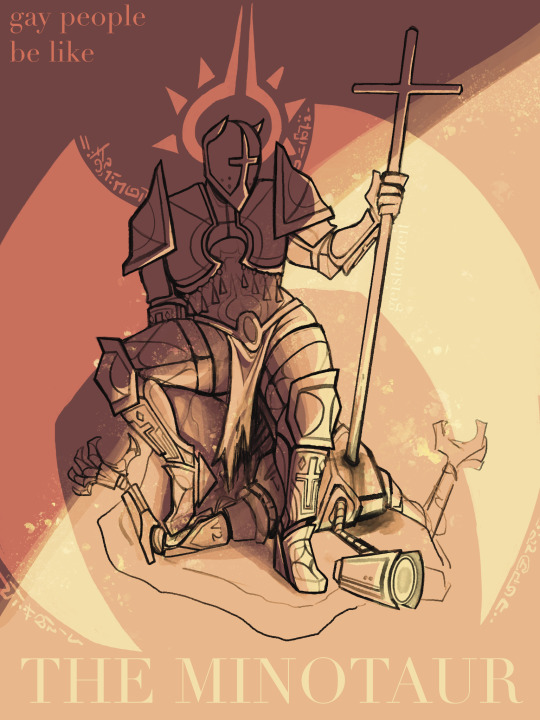
i forgot to add v1's wings :^(
#ultrakill#gabriel ultrakill#v1 ultrakill#based on theseus & the minotaur#you will look at Gabriel's itty bitty waist. why's he built like that#redrawing them as homoerotic classical art pieces is like a hobby at this point. i should post some more of those#my art
235 notes
·
View notes
Text

one more beef for the night
#enforcer for big salmon gets impaled by a drowned. coincidence? i think not#minotaur beef is silly#hes loosely based off a highland cow :3#vintagebeef#vintagebeef fanart#hermitcraft#hermitblr#hermitcraft fanart#hermitcraft season 10#hush theseus#catheseus art
72 notes
·
View notes
Text
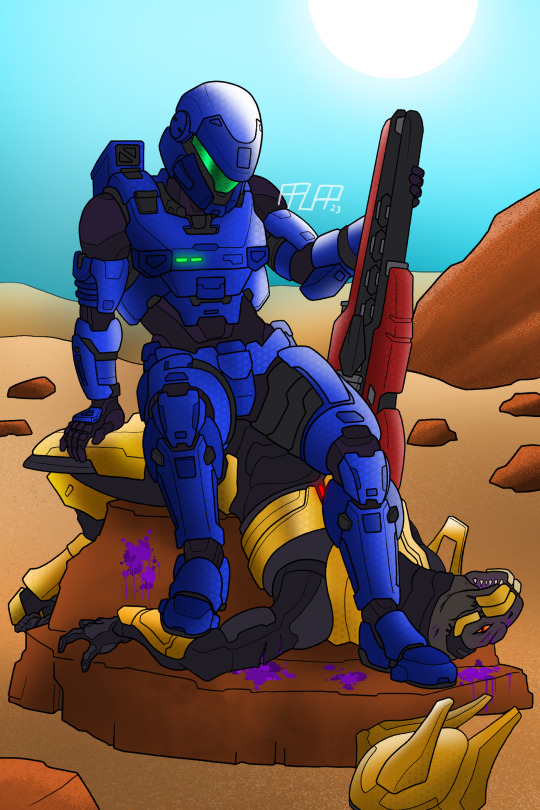
I'm back again! Yeah its more gay alien stuff again
#art art#woof ive been enjoying firefight#halo#halo elite#halo spartan#halo fanart#sangheili#chak 'lok#spartan iv#for those curious this pose is based on the sculpture Theseus and the Minotaur by Antonio Canova#which is arguably even gayer than this i dont think i captured the energy correctly
78 notes
·
View notes
Text

The first real conversation Katniss has with Peeta is when he tells her that he wants to die as himself, that he doesn't want the games to change him into something he's not, and that he wants to keep his identity and prove he's more than just a piece in their games because that's the only thing he has left to care about.
The first time we see Lucy Gray she sings a song that basically says that nothing they could take from her was worth keeping. "Can't take my past. Can't take my history... You can't take my charm. You can't take my health."
The capitol has taken everything from them both, but at the same time, they could never take away who they are.
They are both likeable charismatic and funny, with the kindest hearts, and incredibly loyal to the people they care about.
At the same time, everything they do before the games, and during is calculated. Lucy Gray singing a love song and winning the hearts of the capitol. Peeta confesses he's in love with his district partner, therefore cementing her identity as desirable. Both of them know how to sway people with words, how to charm people, and how to manipulate crowds. Neither of them has any problem doing so to keep themselves, and the people they love safe.
Lucy Gray's song The Old Therebefore, about learning how to love and live her life to the fullest before death, a final and calculated stroke in a last-ditch effort to save herself from the arena. This evokes enough emotion in the watchers to get them to rise to their feet and plead for her life alongside Snow.
Snow, watching the 74th and preparing for the 75th Hunger Games sees Lucy Gray in Katniss. A young girl, from the 12th district. Unafraid at the reaping. Selling a false love story, manipulating a boy who loves her in order to get out and supporting the revolution with the mockingjay as her symbol.
He threatens her family to get her to sell that she and Peeta are in love, to prevent the revolution, because obviously, she's pretending. He's had experience with a girl just like her before. He has no doubt that she has the acting ability to sell this story because clearly, she manipulated the first Hunger Games in her favor, the same way Lucy Gray manipulated him.
Watching the interviews for the 75th Hunger Games he realizes-
Katniss is just an impulsive girl, in a Mockingjay dress she didn't know about, made by someone who supports the revolution.
Peeta is a boy who has the ability to move people with just his words. He made Katniss desirable, he was the one who sold the love story, and he was the one to make their romance seem real. Katniss only started the revolution because she would rather risk dying with him than live without him. A concept President Snow was completely unfamiliar with. And it is with all these realizations crashing around him Peeta drops the baby bomb. He knows the baby's not real, and so does Snow. But it evokes enough emotion in the watchers to get them to rise to their feet and plead for the lives of the tributes.
Is it Lucy Gray or Peeta?
By the time Snow realizes he's made a mistake, it's too late.
Peeta is still charming and manipulating the capitol. Katniss is in love.
He goes up against a kindhearted boy expecting to beat Sejanus again, only to find out that it's Lucy Gray he's fighting; knowing he will never be able to escape their ghosts.
-from a conversation i had with @grandtyphoonpoetry breaking down every character in the hunger games.
#The Hunger Games#Based on: Theseus and the Minotaur#Based on: Greek Mythology#Peeta Mellark#Lucy Gray Baird#fan content: meta
8K notes
·
View notes
Text
So I don't really think that it's a secret that Boston has a significant Minotaur problem. It's a pretty common situation for older American cities on the East Coast- centuries of poorly-documented cowpath-style urban growth providing an ideal nesting ground, widespread electrification and plentiful steam tunnels that compensate for the loss of the temperate Mediterranean climate that they're used to. And all this on top of limited institutional knowledge of proper containment tactics at least up until the Greek diaspora started to really blow up in the 20th century. You only have to fuck up the safety checks on one cargo steamer coming in from the broad area of old Minoa and then basically any import controls you put in after that point are closing the barn door after the bulls are loose. So yeah, no secret, it's an issue.
I do think, though, that we've kind of let the specific narrative surrounding the issue get away from us in the usual fashion, the problem people picture when they hear "Minotaur" isn't anywhere close the to the problem as it exists on the ground. I mean people's minds immediately jump to the 1949 Boylston massacre, but let's be real, even though that was really politically useful for finally getting the exit fares on the T removed, that was still a black-swan event, right? Basically every mayor since, like, Hynes has lived in mortal terror of having to manage a repeat of something like that during the mass media era, let alone the smartphone era. So we've got these Theseus kill-teams with their titanium-composite ropes and souped-up cattle prods and bolt guns, we have these constant "track replacement" stoppages on the orange line, and it's fine. It's fine! There hasn't been a serious Minotaur thing within walking distance of a T stop since, like, 2006, which again you can mostly chalk up to the chaos surrounding the dig.
No, the actual danger zones, the silent killers are the exurbs, like West Roxbury, Roslindale, parts of Hyde Park. Relatively dense foliage, bad sightlines, far enough from the urban center that the response times are bad, foot traffic that's basically nonexistent for big parts of the workweek because everyone's either commuting or hunkered down working from home. And, of course, a steady stream of delivery drivers with no political ties to the area. Which is an important element, right? I mean it's kind of baked into the Minotaur's nature, that they have a very finely tuned instinctual awareness of the politics of their situation. Start snagging homeowners, there might be a ruckus. But Amazon does steady business everywhere, and Minotaurs are smart enough to cover their bases, to wait until after the drivers have dropped off your package or delivered your food. So yeah, watch yourself out there. One eye on the treeline at all times. And if you see an Amazon van left idling, get ready to run faster than the driver could.
5K notes
·
View notes
Text
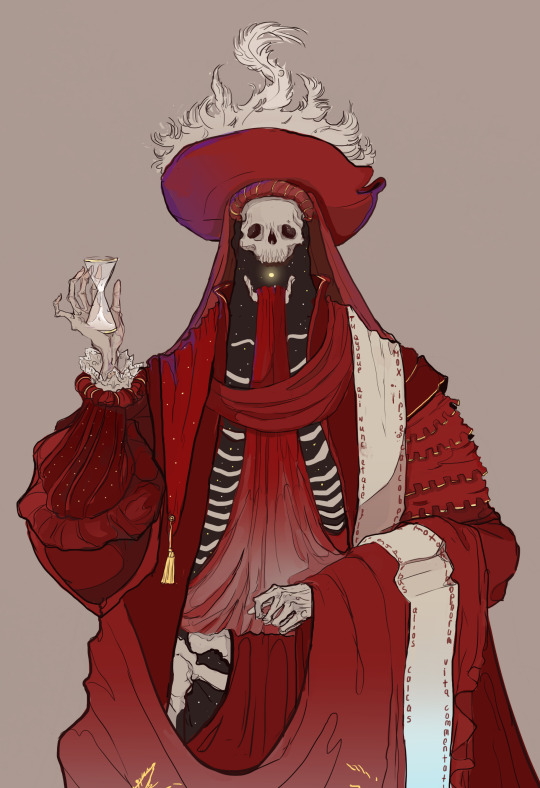

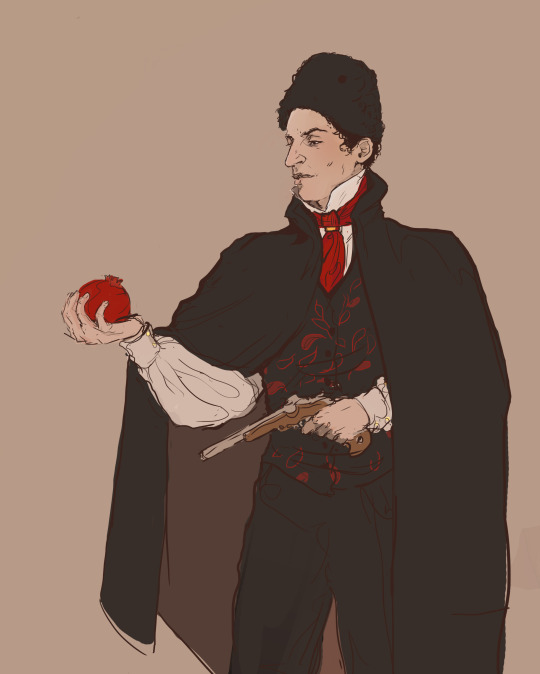
Commentary by the author of the drawings (who is not me, but the artist at @vermium!):
The Persian is based on 1925 version, played by Arthur Edmund Carewe. He was the best, even though he wasn’t supposed to be THE Persian, but some other guy. The Persian is fascinating. He is like Theseus who can’t bring himself to slay the Minotaur, the whole purpose of him entering the labyrinth, and the Minotaur has long forgotten about him. His guns in disuse, his sword all clean, the unfortunate Theseus wanders the house of Asterion aimlessly, lonely like the monster, lost in the labyrinth like a man would be. There is a part in the book when the Phantom, the one who wants to be seen, loved, all of that stuff, turns to a man who saved his ass, paying for that with his everything, his homeland, even his name - and casually says: “you didn’t exist, you had ceased to exist”.
The Red Death - the hat is inspired by Cranach, the text comes from Petrarch’s The Secret, and the skeleton illusion is based on pajamas.
636 notes
·
View notes
Text
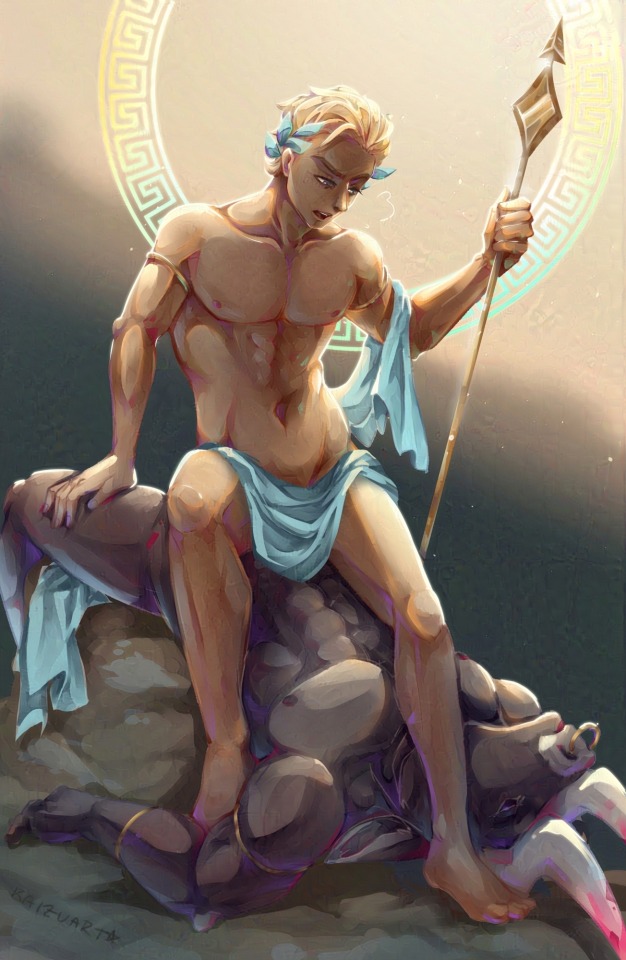
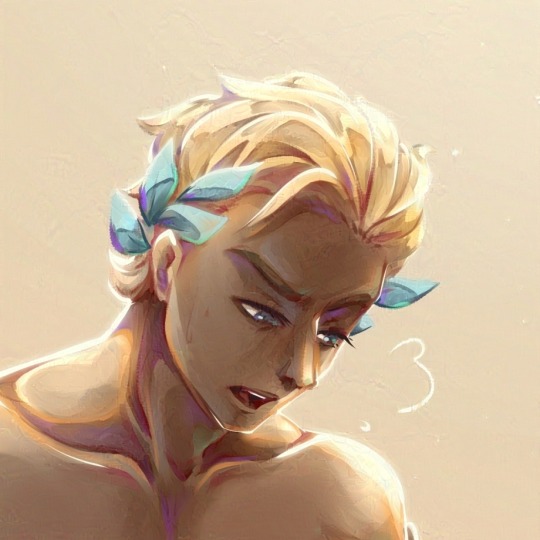

Theseus and the Minotaur You know, based on that one fancy statue.
261 notes
·
View notes
Text
#eldest daughter syndrome my beloved 💜 (via glintglimmergleam)
I read a post on Reddit that asked what Katniss would be like if she lived in the real world. And I was so frustrated with the answers. I think people don't understand that Katniss is an extremely realistic character.
A teenage girl who raises her younger sister, is the main breadwinner in her home, and sacrifices her life for someone else's . In the books she literally sacrifices her life for Prim's, but in real life she would sacrifices her childhood and her future. How many Katnisses do you know that dropped out of school, don't have a social life, didn't go to college to be the provider of their house.
Unfortunately there are more Katnisses in the world than I want to admit. Young girls forced to take on very big responsibilities.
I did that, I dropped out of college to take care of my sick mother. I was her and my elderly grandmother primary caregiver at 17 while I was providing for our house.
Katniss is a girl forced to be an woman because other adults around her failed to protect her. Unfortunately realistic, but that's why I love her so much.
905 notes
·
View notes
Text
PSA: There are no Dungeons in Dungeon Meshi! They're labyrinths!
(WARNING FOR MANGA SPOILERS)
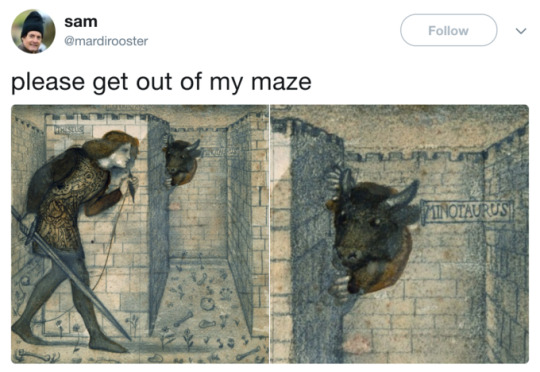
When the characters in the manga talk about dungeons, in Japanese they are actually using the word 迷宮 (meikyū) which means labyrinth. The connotation based on the kanji used is a palace or castle with many confusing rooms. The word “dungeon” (ダンジョン, danjon) is only every used in the manga’s title, when the narrator of the manga is referring to the title ("ahh Dungeon Meshi!"), or when Kui discusses dungoniums (ダンジョニウム/Danjoniumu) which she describes in the world guide as miniature dungeons, built to emulate a labyrinth.
The English loan word “dungeon” is most likely intended to catch Japanese reader’s eyes because it is foreign and exotic, and lead them into a false sense of security because of the Japanese pop culture perception of “dungeon” as a relatively harmless place where characters have formulaic adventures and gather resources as part of a game, or a game-like story.
“Dungeons” in Japanese pop culture can be sinister, but they have come to mean something as innocuous as “level” or “environment.” The early story of Dungeon Meshi is lighthearted and full of comedy, which reinforces this idea and leads readers to believe that the labyrinth in the story is just a generic backdrop with little inherent importance, like it is in many fantasy stories. However, Kui repeatedly suggests the labyrinth is not benign, that it is itself a monster and that anyone foolish enough to go into it is at risk of becoming food, and being devoured.
Before the word dungeon came to generically mean “place to exploit for resources” in fantasy fiction and gaming, its primary meaning was prison. So then the title “Dungeon Meshi” actually means “prison meal.” But who or what does the prison in Dungeon Meshi contain? Of all the people in the dungeon, who are the prisoners? And what does a “prison meal” really mean? A meal eaten by prisoners? A meal cooked by prisoners? A meal cooked using prisoners as ingredients? All of these meanings are implied and hinted at in the manga.
The characters in the story call the dungeon a labyrinth, which is a word that means a maze-like prison, specifically one that traps innocent young people and a man-eating monster inside. Both the monster and its food, the people, are prisoners… But which of them will die and be eaten? Who will escape the labyrinth in the end, and what will it cost them?
You’ll have to read Dungeon Meshi to find out!
======================
But so, you may ask, Mushroom, aside from all that stuff you just said, why does the dungeon/labyrinth distinction matter?
ARIADNE SPIDERS

(Using the cute version here to protect anyone with arachnophobia)
These are giant spiders that the elves use to produce silk, which they use to make the armor the Canaries wear. Though we don’t know for sure, it’s likely the spiders are domesticated in order to make farming their silk easier.
Ariadne is the name of an Ancient Greek mythological character, and may be derived from the Ancient Cretan dialectical elements ari (ἀρι-) "most" (which is an intensive prefix) and adnós (ἀδνός) "holy", but the exact origins of the name are unknown. It may be pre-Greek and not from the Indo-European language family at all.
Ariadne was a princess of Crete that helped the hero Thesus escape from the maze/dungeon that contained the minotaur by giving Theseus a ball of magic thread.
The spiders in the manga have a pattern on their backs that looks like a maze, and their silk thread is the thing that protects the Canaries while they’re in the dungeon, and allows them to make it back out alive. The elves may consider the spiders “most holy” because they provide the means for them to protect themselves in battle.
Having the elves use a giant spider as a type of livestock might also be a playful reference to the drow (dark elves) of Dungeons & Dragons, since they worship a spider goddess, and Kui’s elves probably don’t worship the spiders if they’re using them as livestock… Though it’s also possible that they have a reverence for the spiders similar to the way cows are worshiped in parts of India, since some of elven culture appears to be based on South Asia!
THE CANARIES ARE BEING SACRIFICED TO THE DUNGEONS
Minos, Ariadne’s father, prayed to the God Poseidon to help him defeat his brothers and become king. He was sent a snow-white bull as a sign of the God’s favor. Minos was supposed to sacrifice the bull to Posiedon to show his gratitude, but because it was so beautiful Minos kept it, and sacrificed a different, inferior bull instead.
To punish Minos, Poseidon made Mino’s wife fall in love with the bull, which resulted in her mating with it and giving birth to a half-man, half-bull monster, a minotaur that could only survive by eating human flesh. King Minos constructed a labyrinth to hide the proof of his family’s shame and keep the minotaur trapped inside it.
In order to avoid war with King Minos, the people of Athens made a bargain, and every few years they sent 14 youths from their noble families to Minos as a sacrifice. These young men and women were sent into the labyrinth, where they became lost and trapped, and were eventually eaten by the minotaur. This continued until Ariadne fell in love with one of the Athenian youths, Theseus, and gave him a ball of magic thread which allowed him to kill the minotaur and escape the labyrinth.
There’s many ways this tale parallels the story of Dungeon Meshi. The ancients used the demon to accomplish their goals, and eventually their use of the demon’s power and their failure to control it led to them having to imprison the demon in a maze, and conceal its existence from the rest of the world. Now the elves, the descendants of the ancients, regularly “sacrifice” some of the children of their noble families to the dungeon, in an attempt to keep the demon from breaking free and destroying the world…
(This is an excerpt from my Dungeon Meshi essay.)
377 notes
·
View notes
Note
Hi! Do you personally have any recommendations of films or shows that best depict green mythology (in Greek or English)?
Oh I had a similar question here though specifically only about American adaptations of the myths.
Now of course in Greek we have:
Iphigenia (1977) – Directed by Michael Cacoyannis
Electra (1962) – Directed by Michael Cacoyannis
The Trojan Women (1971) – Directed by Michael Cacoyannis
Oedipus Tyrannus (1968) – Directed by Philip Saville (Greek co-production)
Medea (1973) – Directed by Nikos Psacharopoulos
Prometheus Bound (1998) – Directed by Kostas Ferris
Έτερος Εγώ (2017 - Film) – Inspired by Pythagorean philosophy and numerology rather than a direct myth. It explores a serial killer who follows a mathematical pattern based on Pythagoras’ teachings.
TV Series:
To 10 (2007–2008) – Greek adaptation inspired by the myth of the Minotaur
Aliki Danezi-Knutsen’s Medea (2001) – TV adaptation
Έτερος Εγώ: Χαμένες Ψυχές (2019 - Season 1) – Loosely inspired by the myths of Theseus. The murders in the series follow symbolic connections to them.
Έτερος Εγώ: Κάθαρσις (2020 - Season 2) – Influenced by the concept of catharsis from Greek tragedy, particularly the purging of sins through suffering, a theme central to Oedipus Rex and other tragic heroes.
Έτερος Εγώ: Νέμεσις (2023 - Season 3) – Inspired by Nemesis, the goddess of divine retribution. The season focuses on justice and revenge, embodying the mythological principle of punishment for hubris.
Theater (notable modern adaptations):
The Bacchae – Adaptations by Theodoros Terzopoulos
Oedipus Rex – Adaptations by Dimitris Papaioannou
Lysistrata – Various modern Greek productions
Animation:
Pandora and Plato – Greek animated short inspired by Pandora’s myth
74 notes
·
View notes
Text


I wanted to have this done two months ago but art block decided to make me deathly alergic to my drawing tablet. So here's a wip instead.
My beloveds being tragic
@voiidwalking suggested I base the drawing of the sculpture of Theseus and the Minotaur. So thank you cause I love it.
Update-I finished it here :
#warhammer 40k#warhammer art#primarchs#fulgrim#fulgrim x ferrus#ferrus manus#art wip#wip#daemon primarch
164 notes
·
View notes
Text
HELLO EVERYONE! I am writing a brand new musical based on the myth of Theseus and the Minotaur told from the perspective of Ariadne! If you’d like updates then follow me here until I have an account for the musical and anything worth sharing!
#artists on tumblr#music#percy jackson#pjo#percy jackon and the olympians#hoo#epic the musical#epic the vengeance saga#epic odysseus#epic the ithaca saga#epic the wisdom saga#epic the thunder saga#epic the troy saga#epic poseidon#epic athena#penelope of ithaca#odysseus x penelope#penelope of sparta#ariadne#Ariadne of Crete#dionysus x ariadne#Theseus#Thesues and the Minotaur#unsigned music#musical theatre#musicals
54 notes
·
View notes
Text

Based on Theseus and the Minotaur, by Antonio Canova
#digital art#art#fear and hunger#fear and hunger cahara#funger#crow mauler#pinup art#cahara#crow mauler fear and hunger#I don’t have much to say about this one
69 notes
·
View notes
Photo
Fun fact, the character is named for a 1799 poem by William Wordsworth, which the death of a young girl named Lucy Gray, who went out one evening into a storm. It relies on narrative storytelling and imitates the form of traditional 18th century ballads.
LUCY GRAY
Oft I had heard of Lucy Gray, And, when I crossed the Wild, I chanced to see at break of day The solitary Child.
No mate, no comrade Lucy knew; She dwelt on a wide Moor, -The sweetest Thing that ever grew Beside a human door!
You yet may spy the Fawn at play, The Hare upon the Green; But the sweet face of Lucy Gray Will never more be seen.
“To-night will be a stormy night, You to the Town must go, And take the lantern, Child, to light Your Mother through the snow.”
“That, Father! Will I gladly do; ‘Tis scarcely afternoon- The Minster-clock had just struck two, And yonder is the moon.”
At this the Father raised his hook And snapp'd a f—-band; He plied his work – and Lucy took The lantern in her hand.
Not blither is the mountain roe; With many a wanton stroke Her feet disperse the powdery snow, That rises up like smoke.
The storm came on before its time, She wander'd up and down, And many a hill did Lucy climb But never reach'd the Town.
The wrecked Parents all that night Went shouting far and wide; But there was neither sound nor sight To serve them for a guide.
At day-break on a hill they stood That overlooked the Moor; And thence they saw the Bridge of Wood A furlong from their door.
They wept, and turning homeward cried "In Heaven we all shall meet!" When in the snow the Mother spied The print of Lucy's feet.
Then downward from the steep hill's edge They tracked the footmarks small; And through the broken hawthorn-hedge, And by the long stone-wall;
And then an open field they crossed, The marks were still the same; They tracked them on, nor ever lost, And to the Bridge they came.
They followed from the snowy bank The footmarks, one by one, Into the middle of the plank, And further there were none.
Yet some maintain that to this day She is a living Child, That you may see sweet Lucy Gray Upon the lonesome Wild.
Over rough and smooth she trips along, And never looks behind; And sings a solitary song That whistles in the wind.

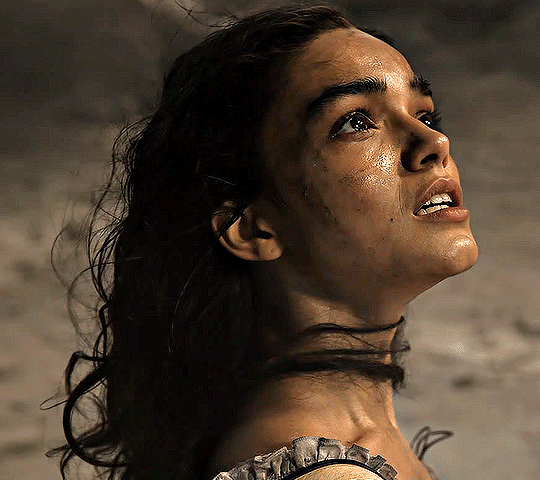
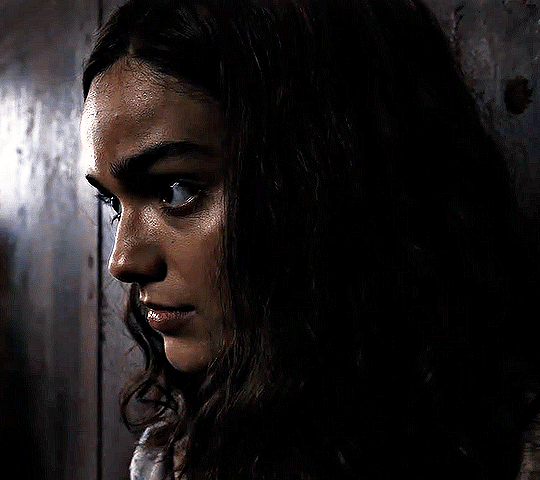



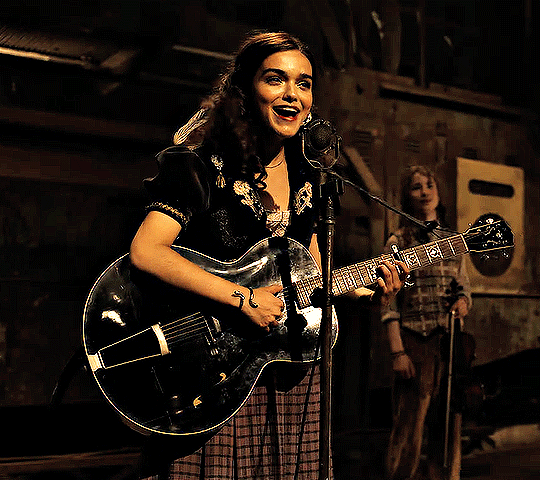
#The Hunger Games: The Ballad of Songbirds & Snakes#Based on: Theseus and the Minotaur#Based on: Greek Mythology#Based on: Lucy Gray#Rachel Zegler
5K notes
·
View notes
Text
Ariadne retelling
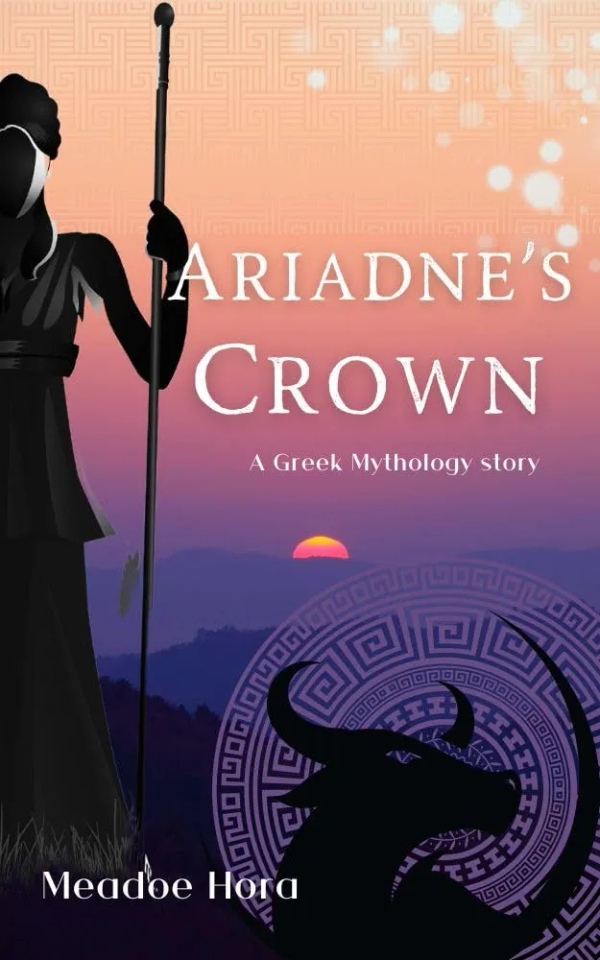
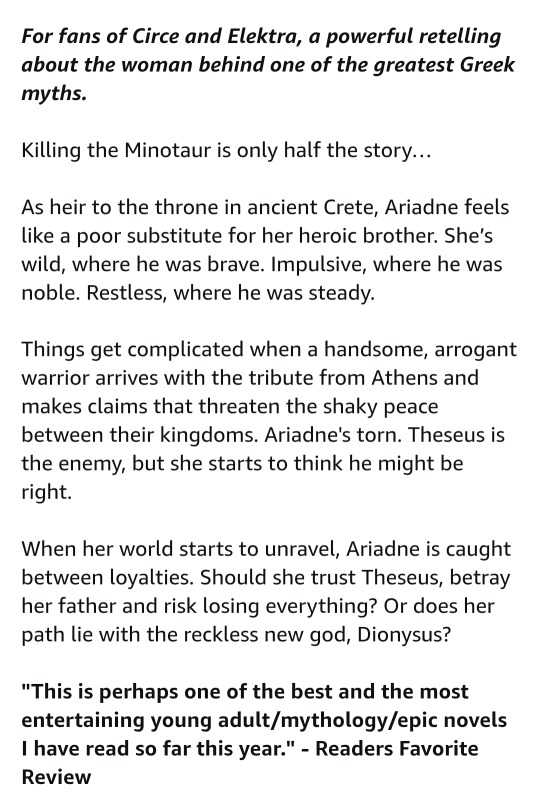
Only vaguely remember Circe and never read Electra, so the comparison doesn't help me
Ariadne had more than one brother, so it's difficult to tell which one she's describing
"Claims that threaten the shaky peace", so Theseus isn't there simply because of the Minotaur eating the youngs of Athens?
Not sure if I'll like the dynamic between Dionysus and Ariadne in this book
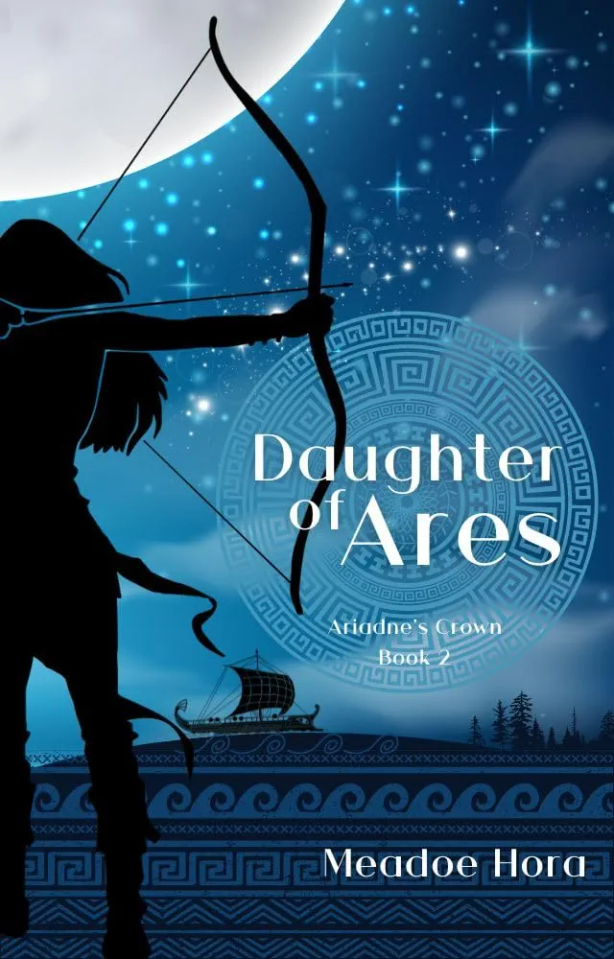
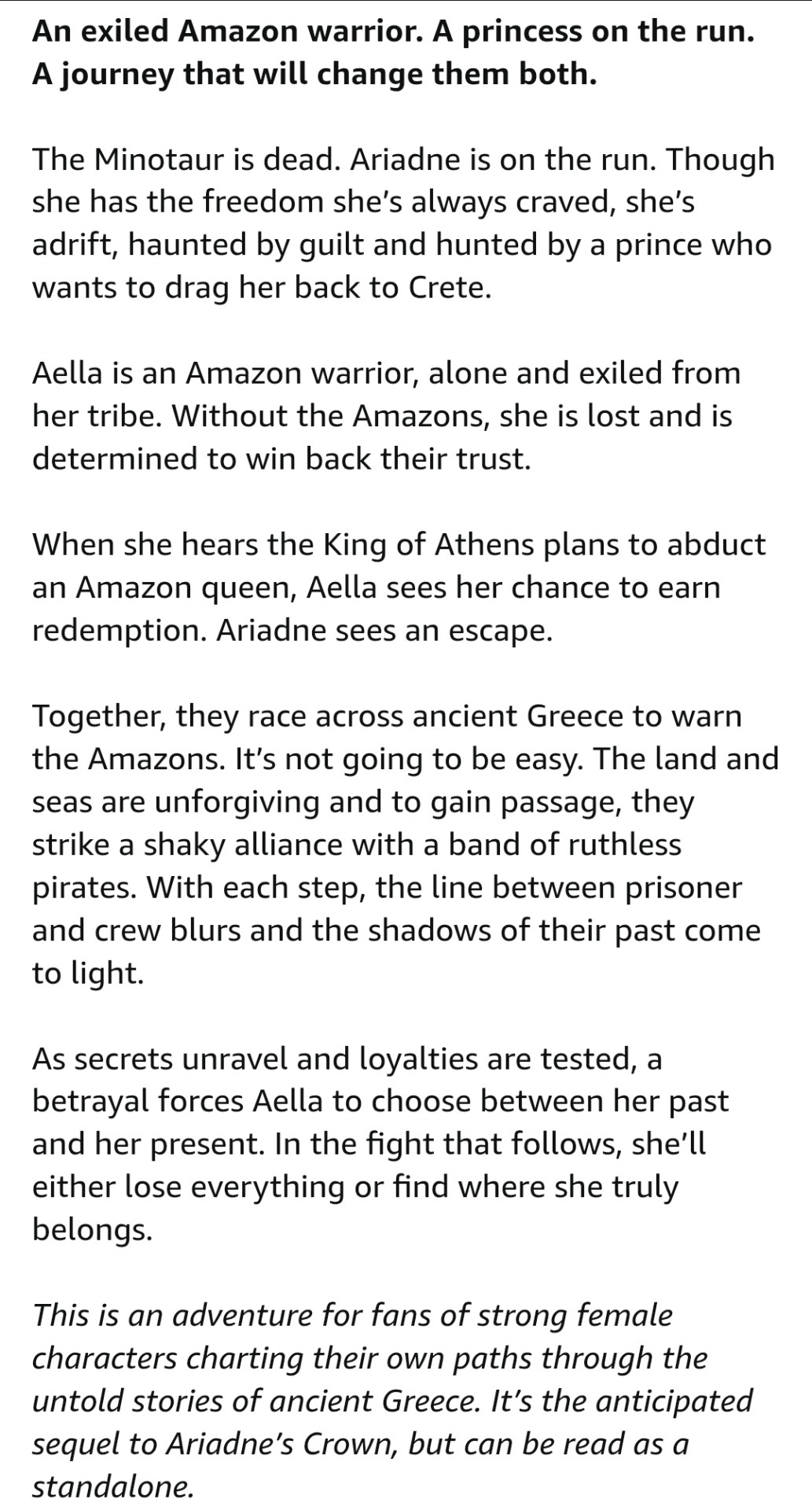
Based on the description of the sequel, i'm going to assume the marriage to Dionysus didn't happened and that the noble, brave, steady brother is the prince hunting her
The kidnapping of a Amazon leader happened years later, unless it isn't Theseus
I found another retelling about Ariadne
@margaretkart
#ariadne#dionysus#theseus#greek myth retellings#greek mythology retelling#greek mythology retellings
21 notes
·
View notes